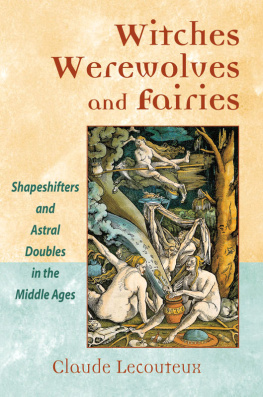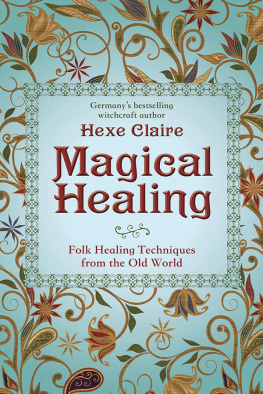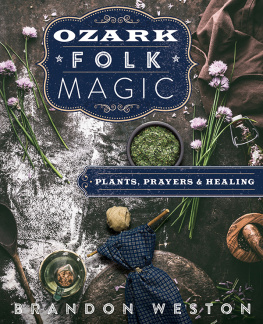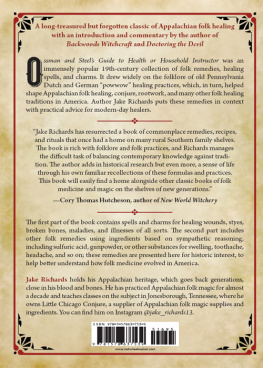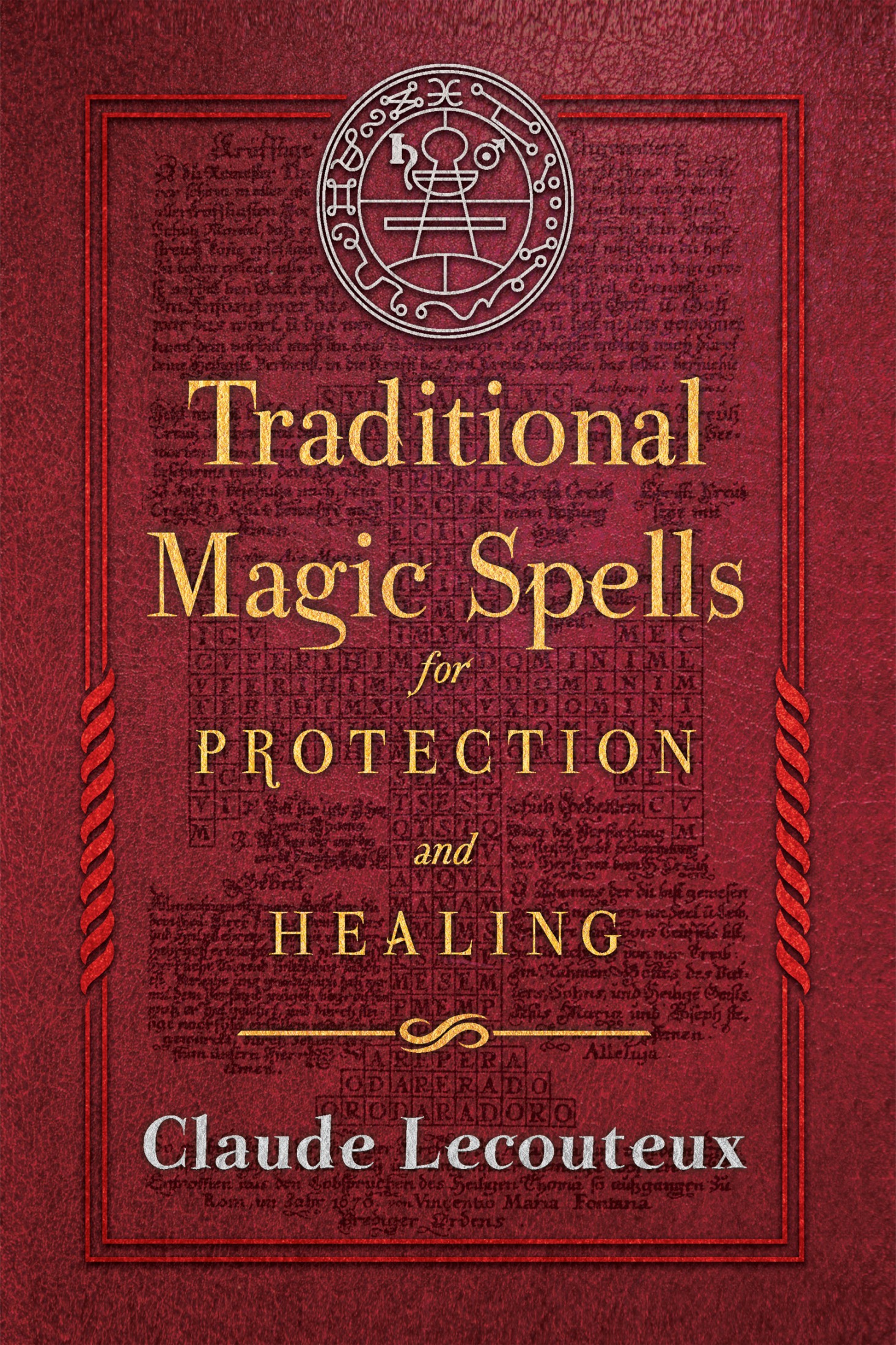
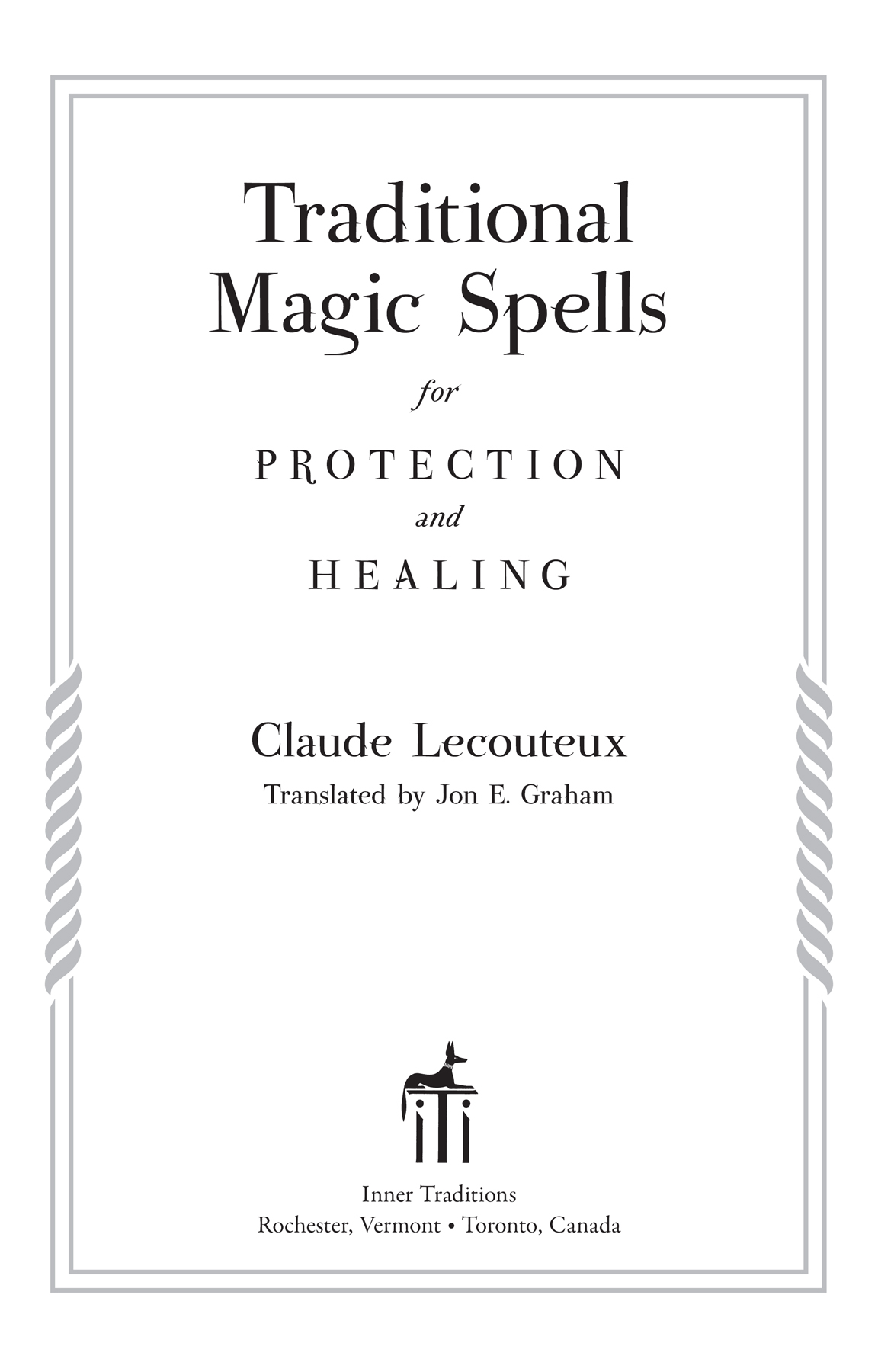
Traditional Magic Spells
for Protection
and Healing

Traditional Magic Spells for Protection and Healing presents fascinating source material of magical texts, until now, only known by specialists.
BENGT AF KLINTBERG, SWEDISH FOLKLORIST AND AUTHOR OF SVENSKA TROLLFORMLER [SWEDISH MAGIC SPELLS]
Claude Lecouteuxs work on the topic of ancient magic spells stands out as a refreshing reminder and example of what real scholarship should be and can be. The book is eminently researched and readable: it features a substantial introduction, chapters organized by topic, several appendices, an index, and a full bibliography. It is a must-read not only for the specialists of ancient magic and medicine but also for the general public.
JACQUES E. MERCERON, PROFESSOR EMERITUS OF FRENCH AT INDIANA UNIVERSITY, BLOOMINGTON
ACKNOWLEDGMENTS
I would like to extend my deepest gratitude to Monika Kropej (Zagreb), Emanuela Timotin (Bucharest), and Daiva Vaitkeviien (Vilnius), who allowed me to take advantage of their research; Marie Dominique Leclerc and Alain Robert (Troyes), Anne Martineau (Saint-tienne), and Gian Marco Mondino (Turin), who provided me with otherwise inaccessible documents; and Ronald Grambo (Kongsvinger), Baujke Finet van der Schaaf (Paris), Claude Thomasset (Paris), and Philippe Walter (Grenoble), who helped me solve several linguistic problems.
INTRODUCTION
THE MANNER OF THE CURE
When illness or misfortune strikes unexpectedly, it always inspires two major questions: Why? How? Human beings have responded to these questions in a variety of ways, one of the oldest of which can be found in the work of Hesiod: such woes are a punishment. This is what he writes about the myth of Pandora:
For ere this the tribes of men lived on earth remote and free from ills and hard toil and heavy sickness which bring the Fates upon men; for in misery men grow old quickly. But the woman took off the great lid of the jar with her hands and scattered all these and her thought caused sorrow and mischief to men.
But this is only one interpretation; others came before it and later coexisted with it. People have seen misfortunes as being driven by hostile powers, gods, demons, and other beings that today we call fantastic but that are reflections of folk belief, or else the result of actions by sorcerers or witches motivated by jealousy, envy, or vengeance.
One of the great figures in the fight against demons of any kind was Solomon, whose name became attached to a form of magic and even to an herb. The historian Flavius Josephus (first century AD) tells us just what he did:
He composed such incantations also by which distempers are alleviated. And he left behind him the manner of using exorcisms; by which they drive away demons; so that they never return: and this method of cure is of great force unto this day. For I have seen a certain man of my own country, whose name was Eleazar, releasing people that were demoniacal in the presence of Vespasian, and his sons, and his Captains, and the whole multitude of his soldiers: the manner of the cure was this: he put a ring that had a root of one of those sorts mentioned by Solomon to the nostrils of the demoniack: after which he drew out the demon through his nostrils: and when the man fell down immediately, he abjured him to return into him no more: making still mention of Solomon, and reciting the incantations which he composed. And when Eleazar would persuade and demonstrate to the spectators that he had such a power, he set a little way off a cup or basin full of water, and commanded the demon, as he went out of the man, to overturn it; and thereby to let the spectators know that he had left the man. And when this was done, the skill and wisdom of Solomon was showed very manifestly. For which reason it is, that all men may know the vastness of Solomons abilities.
The Testament of Solomon, an apocryphal text, lists thirty-six demons, including Artosael, who causes violent pain in the eyes; Horopel, who sends boils, inflammations of the muscles, and abscesses; Kourtael, emissary of intestinal lesions; and Mardero, who induces incurable fever chills. But this notion that demons cause illness can be found much earlier among the Babylonians, who possessed all kinds of recipes for expelling them, such as the following:
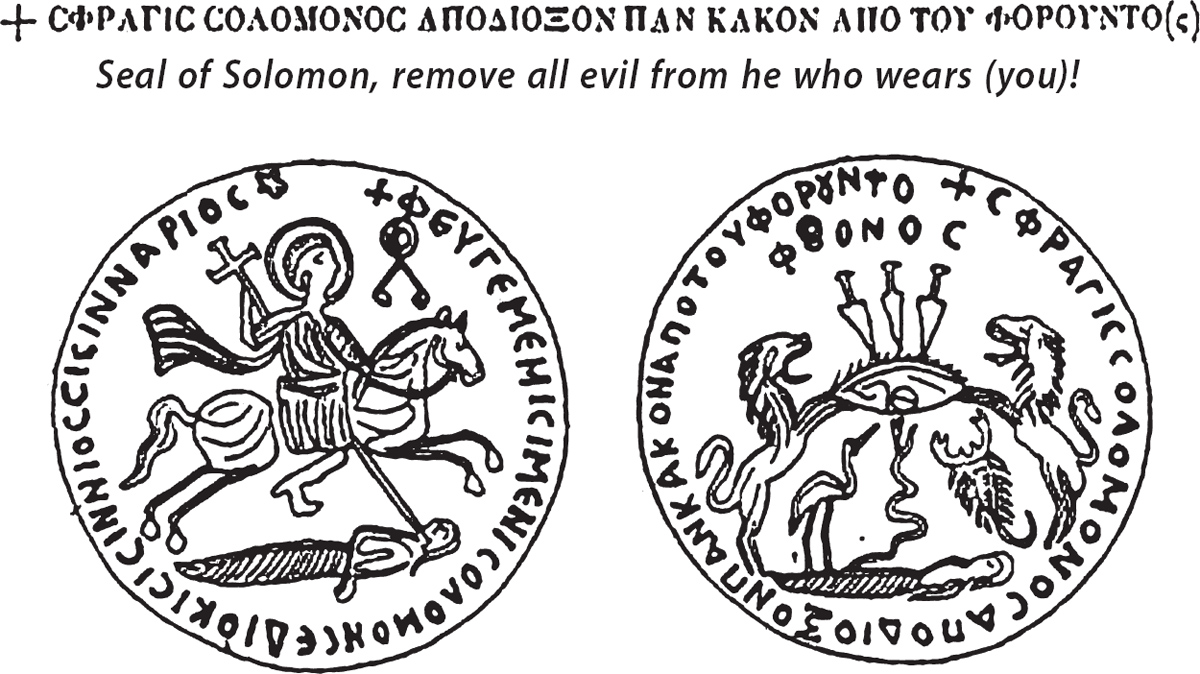
Pull up a clod of clay from the seabed
Make from it a black statue that resembles the person you seek to heal;
Attach to its head the fur of a white goat;
Place the figurine on the body of the ill person.
Recite the famous incantation of Ea.
Turn the patients face toward the west.
Then the evil spirit that has seen it will go away.
And the demon that took possession of him will disappear.
According to this view of the world, the whole of Creation is inhabited by demonssometimes planetaryand spirits. Plants and minerals are under their protection, and it is necessary to gain their help through prayers and offerings for their properties to be effective. Sometimes the plants themselves are considered to be demons or souls of the dead returned to an earthly existence. Over the centuries, Christian elements were incorporated into pagan harvesting rituals and the names of God or the saints replaced those of ancient gods and supernatural entities.
Charms show that people turned toward the pagan gods to obtain healing. In medieval Ireland, the god of medicine, Dian Cecht, was invoked for hemorrhages, burns, coughs, and tumors, and the mythic smith Goibniu appeared at the side of Jesus in a charm intended to remove a thorn. Then, in the course of historical development, these figures became the stuff of legend. Among the Transylvanian gypsies, for example, the king of the Loolicointermediary demonsand Ana, queen of the Kealyia, the mountain fairies, had nine children representing various afflictions:
Melalo (the Dirty or Nasty One) takes possession of people and drives them mad;
Lilyi (the Muddy One), wife of Melalo, causes coughs, diarrhea, and catarrh in both animals and humans;
Tulo (the Fat One) causes pains in the lower half of the body;
Taridyi (the Burning One), spouse of Tulo, carries childbed fever;
Shilalyi (the Cold One) causes cold fevers;
Bitoso (the Faster), husband of Shilalyi, causes headaches, stomach disorders, and loss of appetite;
Lolmisho (Red Mouse) brings skin disorders;
Minceskre (the Vagina), wife of Lolmisho, is a carrier of syphilis and skin ailments;
Poreskoro (the Tailed One) is linked to plague and cholera.
CHRISTIANITY
The notion of ailments as punishment for a transgression was reasserted by the fathers of the Church, citing a passage from the Gospel of John (5:14) in which, after healing a paralytic, Jesus tells him: Behold, thou art made whole: sin no more, lest a worse thing come unto thee.
But the Church was forced to contend with healing practices inherited from paganism. In his book On Christian Doctrine, Saint Augustine (354430) states:
All the arrangements made by men for the making and worshipping of idols are superstitious.... And to this class belong, but with a bolder reach of deception, the books of the haruspices and augurs. In this class we must place also all amulets and cures which the medical art condemns, whether these consist in incantations, or in marks which they call characters
Next page

